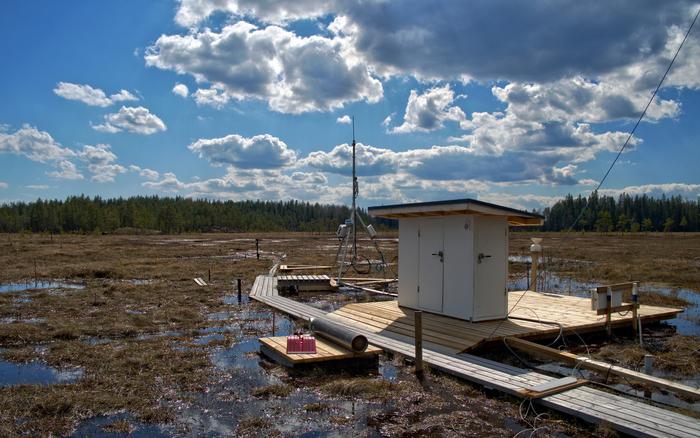
Pre-industrial aerosol formation processes appear to be revealed by a study conducted in a pristine Finnish peatland. The investigation aimed to understand atmospheric particle formation in an environment with minimal human influences, shedding light on historical climate conditions.
The study unveiled that Siikaneva peatland, located in southern Finland, releases highly oxygenated organic molecules at night, leading to aerosol particle formation closely resembling the pre-industrial atmosphere.
The 9000-year-old minerotrophic Siikaneva peatland emits large levels of terpenes dominated e.g., by isoprene and alpha-pinene. The researchers observed the formation of new atmospheric particles initiated by purely natural vapours, a mechanism that could resemble the pre-industrial atmosphere. Previously, the same process could only be verified at the molecular level under laboratory conditions.
“Our results basically mark the first confirmation that pure biogenic new particle formation is possible in ambient conditions,” says Postdoctoral Researcher Wei Huang from the Institute for Atmospheric and Earth System Research INAR at the University of Helsinki.
The results were published in the journal Science Advances in April.
Widespread pure biogenic aerosol formation
The findings underscore the importance of pristine environments, such as present-day Finnish peatland, when studying pre-industrial aerosol production processes.
“These environments with minimal sulphur or nitrogen oxide pollution serve as natural laboratories. Our study is potentially the best current example of pre-industrial aerosol production processes, which shows that truly pristine environments do exist in the present-day atmosphere, largely influenced by human activities. It also demonstrates that pure biogenic aerosol formation could be a widespread and frequent phenomenon in the present day. This will potentially impact the climate of areas dominated by peatlands, as well as other locations with flat topography,” says Professor Federico Bianchi from INAR.
Peatlands cover large areas in the Northern Hemisphere: approximately four million square kilometres north of the 30th parallel and half a million square kilometres north of the 50th parallel. Pure biogenic particles formed from these large areas may have been an important source of cloud condensation nuclei for cloud formation during the pre-industrial era.
Historical aerosols help to understand the future
Understanding pre-industrial aerosol formation is important, as climate change is measured by comparing present-day atmospheric conditions with pre-industrial ones. Aerosol particles cool the atmosphere and climate by scattering incoming radiation and acting as cloud condensation nuclei. The particles control cloud properties, such as the reflection of sunlight back into space. Understanding past conditions helps to estimate how aerosol formation processes have evolved and how they impact the global climate today.
The results may also provide clues for understanding new particle formation in the future, the features of which may revert towards pre-industrial conditions because of air pollution mitigation.
“As air pollution is mitigated, particles will be formed with various species, frequencies, intensities, and chemistry. This can eventually affect cloud formation and the climate (e.g., temperatures) on Earth,” says Bianchi.
The findings also provide valuable model parameterization constraints for future studies simulating pre-industrial peatland aerosol impacts on the climate.







